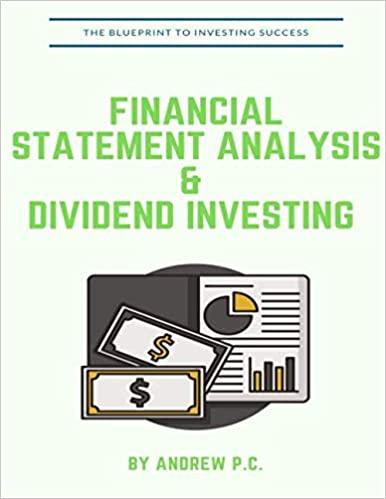Question
Marcus Corporation has a capital budget of $5 million and wants to maintain a capital structure of 40% debt and 60% equity. The company expects
Marcus Corporation has a capital budget of $5 million and wants to maintain a capital structure of 40% debt and 60% equity. The company expects net income of 4 million. What is the expected dividend payout ratio if the company follows a residual dividend policy?
50%
40%
20%
25%
none of the above
A companys dividend policy decision should not be influenced by which of the following?
Constraints imposed by the firm's bond indenture.
The fact that much of the firm's equipment has been leased rather than purchased
The firm's ability to accelerate investment projects.
The firm's ability to delay investment projects
none of the above
A company's stock sells for $2.00 per share. The company wants to use a reverse split to get the price up to $22 per share. How many of the old shares must be given up for one new share to get to the $22 price? Assume this transaction has no effect on market value.
22.0
20.5
10.0
12.0
none of the above
Which of the following would be most likely to result in an increase in a firm's dividend payout ratio?
Its access to the capital markets decreases.
It has more high-return investment opportunities
Its accounts receivable increase due to a change in its credit policy.
It has fewer high-return investment opportunities.
none of the above
A company is planning an IPO of 10 million shares. Each share is expected to sell at $10 per share. The underwriters will charge an 8% spread and incur expenses of $500,000. How much will the company receive if all shares sell at the expected price?
$91,450,000
$92,000,000
$100,000,000
$99,500,000
none of the above
A company sold 10 million shares in an IPO at a price of $10 per share. The underwriters charged an 8% fee and incurred expenses of $500,000. Price per share at the end of the first day was $12.50. How much money was left on the table?
$15.8 million
$33 million
$17 million
$25 million
none of the above
Which of the following is a good reason for a company to go public?
The company has excess capital
The company has a low debt ratio
The company's founders want to diversify
Costs of reporting will be low
none of the above
A large company with publicly traded stock plans to issue additional shares. This is called:
a shelf registration
A private placement
a seasoned equity offering
an employee stock option plan
none of the above
Step by Step Solution
There are 3 Steps involved in it
Step: 1

Get Instant Access to Expert-Tailored Solutions
See step-by-step solutions with expert insights and AI powered tools for academic success
Step: 2

Step: 3

Ace Your Homework with AI
Get the answers you need in no time with our AI-driven, step-by-step assistance
Get Started


